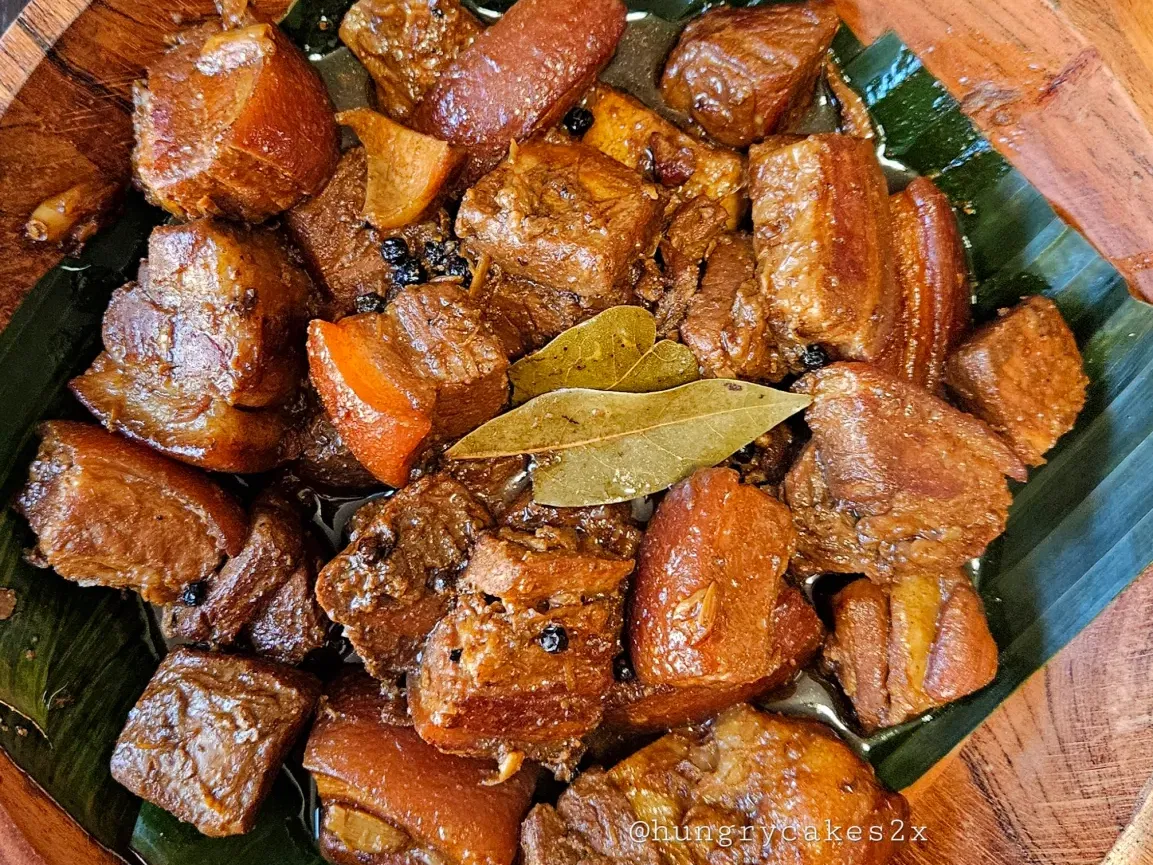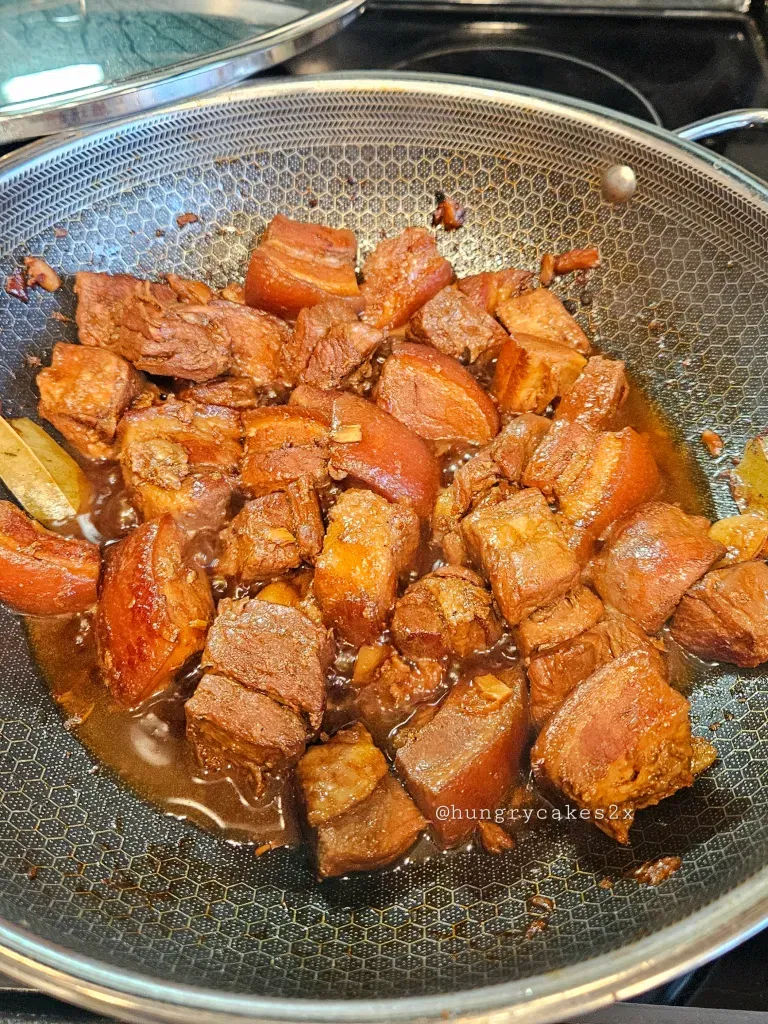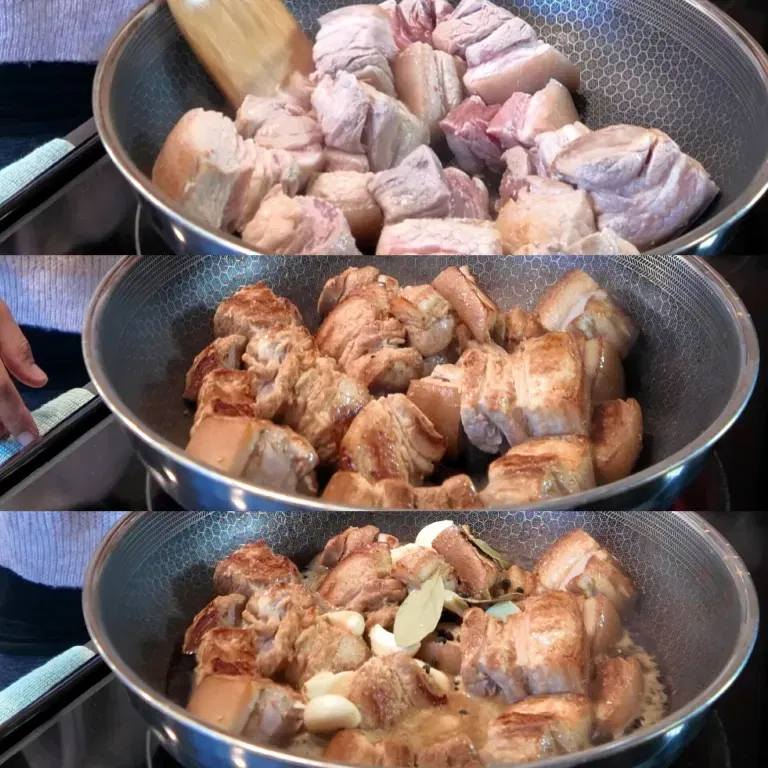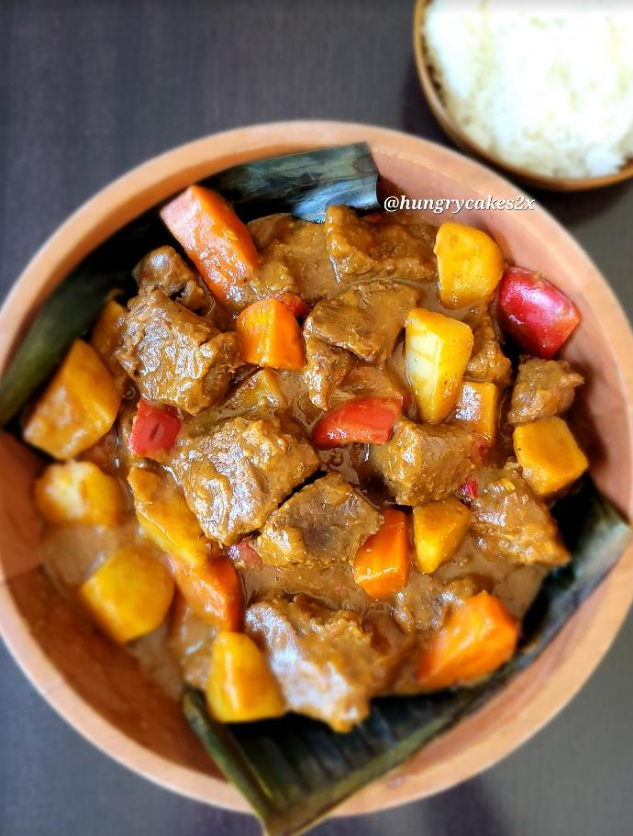PORK ADOBO

Tita Becky •
Oct 28, 2025
Pork Adobo is the most popular Filipino dish. It takes the humblest of ingredients like pork, garlic, vinegar, and soy sauce, and turns into a culinary rockstar with its bold and punchy flavors. Savory, tangy, salty…Oh, so delicious!
One of the coolest things about Adobo is that there’s no one “right” way to make it. Recipes vary wildly depending on each household. Like my mom’s Adobo is very tangy and vinegar-forward. She doesn’t add sugar and doesn’t reduce the sauce, while my Adobo is richer, and more savory and on the sticky side. And don’t even get me started on the differences between Visayan and Tagalog Adobo – It’s like they’re two different dishes altogether! But hey, that’s what makes Adobo so amazing, right? The fact that it’s beautifully imperfect, adaptable dish that can be made a hundred ways.
Ingredients (9)
Ingredients (9)
Instructions
Preheat your wok to medium heat.
Add pork belly (2 ½–3 lb). Let the fat render. Once you see oil or fat come out, saute' the meat and let it brown on both sides. If your pork belly doesn't produce fat or oil, then add a little bit of cooking oil.
Add garlic (1 head), soy sauce (½ cup), cane vinegar (½ cup), water (½ cup), dried bay leaves (3 leaves) and whole black peppercorns (1 tsp).
Bring to a boil. Let it boil for a few minutes before stirring.
Cover. Reduced heat to low and cook for 45 minutes or until meat is soft and tender turning the meat around once.
Once the meat is tender, it's ready to serve, but you can kick it up a notch by leaving it uncovered, increase the heat to medium-high and let the sauce reduce by half until sauce is a little thick and sticky.
Taste the sauce to check if it's to your liking. For exampe, add more water if it's too salty.
Serve with steamed white rice and enjoy!
Notes
Notes
INGREDIENTS and SUBSTITUTIONS
- SOY SAUCE – It plays a vital role in the flavor profile of Adobo. It’s added to enhance the umami flavor and depth of the dish. I prefer to use high-quality soy sauce, such as Lee Kum Kee, which contains only a few ingredients and no additives. It’s bold yet not too salty like other brands. I’ve also used light soy sauce or low-sodium soy sauce in the past, and it works too.
- CANE VINEGAR – It is a crucial ingredient in this dish. Cane vinegar is the preferred choice of many Filipinos for authenticity. It’s made from fermented sugar cane juice. It has a delicate flavor and is not as tangy and sour as other vinegars. It adds a distinctive flavor and aroma to the dish. However, cane vinegar is not always available in the U.S., especially if you don’t have an Asian supermarket near you. You can also use rice wine vinegar, white vinegar or apple cider vinegar instead.
- GARLIC – Another crucial ingredient in this dish, as well as other Filipino dishes. I use one whole head that’s been lightly smashed. It adds aroma and depth of flavor. I’ve seen other recipes use onions. I don’t. I prefer to keep it traditional when it comes to this dish.
- WHOLE BLACK PEPPERCORNS -It’s the essential spice in a traditional Adobo. Keeping it whole allows it to release its flavor and aroma more subtly, adding depth and complexity to the dish. If you use crushed peppercorns the you’ll most likely end up with a very peppery Adobo, which you don’t want.
- DRIED BAY LEAVES -They add a subtle yet distinct flavor to the dish. As the Adobo simmers, the dried bay leaves infuse the sauce that enhances the overall flavor profile. But DON’T EAT IT! Remove when you’re finished cooking.
- WATER – Adding water to the dish is a common practice that helps create a rich, saucy consistency and prevent it from being too oily and salty for a more balanced taste. You also need water to help simmer and tenderize the meat. The ideal amount of water will depend on personal preference.
- SUGAR – An optional ingredient. I like to use a little bit of sugar to balance out the flavors of saltiness and tanginess. I prefer to use cane sugar, but you can also use white sugar, honey, or low-calorie sweetener.
- PORK BELLY – It’s the main protein used in this dish.
COOKING TOOLS
- 12 in WOK from Hexclad is my preferred cooking pan. It uses “a patented tri-ply construction with an aluminum core sandwiched between two layers of stainless steel.” It’s wide, deep, and versatile. You can make stews, stir-fries and etc.
- Wooded spatulas is what I use to prevent the pan from getting scratched.





